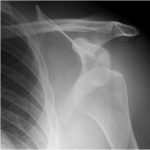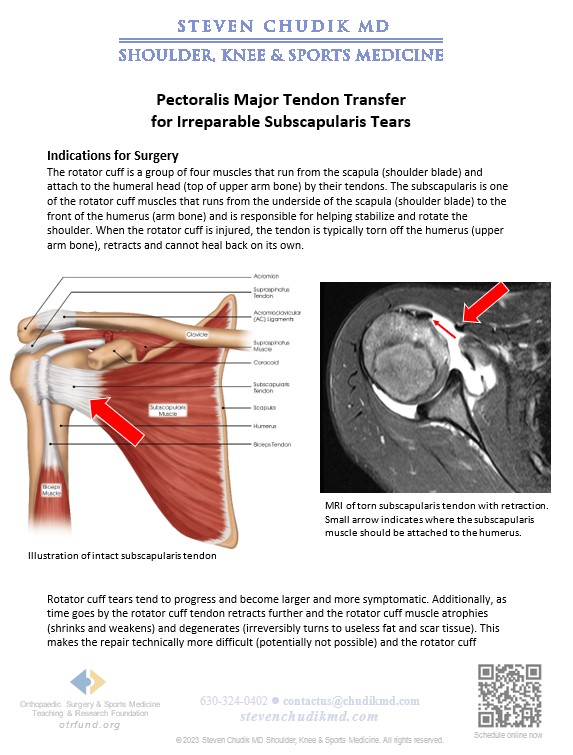 Arthroscopic expert, Dr. Steven Chudik, cites prompt treatment, thorough evaluation and physical therapy as key factors to successful return from shoulder dislocation injury
Arthroscopic expert, Dr. Steven Chudik, cites prompt treatment, thorough evaluation and physical therapy as key factors to successful return from shoulder dislocation injury
The rotator cuff is a group of four muscles that run from the scapula (shoulder blade) and attach to the humeral head (top of upper arm bone) by their tendons. The subscapularis is one of the rotator cuff muscles that runs from the underside of the scapula (shoulder blade) to the front of the humerus (arm bone) and is responsible for helping stabilize and rotating the shoulder. When the rotator cuff is injured, the tendon is typically torn off the humerus (upper arm bone), retracts and cannot heal back on its own.
Rotator cuff tears tend to progress and become larger and more symptomatic. Additionally, as time goes by the rotator cuff tendon retracts further and the rotator cuff muscle atrophies (shrinks and weakens) and degenerates (irreversibly turns to useless fat and scar tissue). This makes the repair technically more difficult (potentially not possible) and the rotator cuff becomes less likely to heal and function normally. Once the rotator cuff reaches a point of significant atrophy and retraction, it is not reparable, and transfer of the pectoralis major muscle may be helpful in regaining some of the lost function of the subscapularis and shoulder becomes less likely to heal and function normally. Once the rotator cuff reaches a point of significant atrophy and retraction, it is not reparable, and transfer of the pectoralis major muscle may be helpful in regaining some of the lost function of the subscapularis and shoulder.
Dr. Chudik approaches rotator cuff tears arthroscopically through small incisions (arthroscopic portals) and can repair the great majority of tears entirely arthroscopically. Sometimes if the tendon is too far retracted or will not stretch to the correct insertion site arthroscopically, Dr Chudik may need to make an open incision to repair the tendon. When the subscapularis rotator cuff cannot reach back to its anatomic position, the pectoralis major muscle tendon can be accessed through the same incision, detached from its normal insertion site on the humerus
and redirected to replace the unrepairable subscapularis muscle. Following this procedure, the patient will be immobilized for six to eight weeks in a sling with no active use of the operative shoulder, followed by six months of physical therapy.
You may return to unlimited activities when there is no pain, full shoulder range of motion and muscle strength, endurance and functional use has been restored. This usually requires greater than six months following a muscle transfer surgery. Dr. Chudik will tell you when it is safe to resume all activities. Dr. Chudik has special protocols for returning to throwing and golf.
Learn More